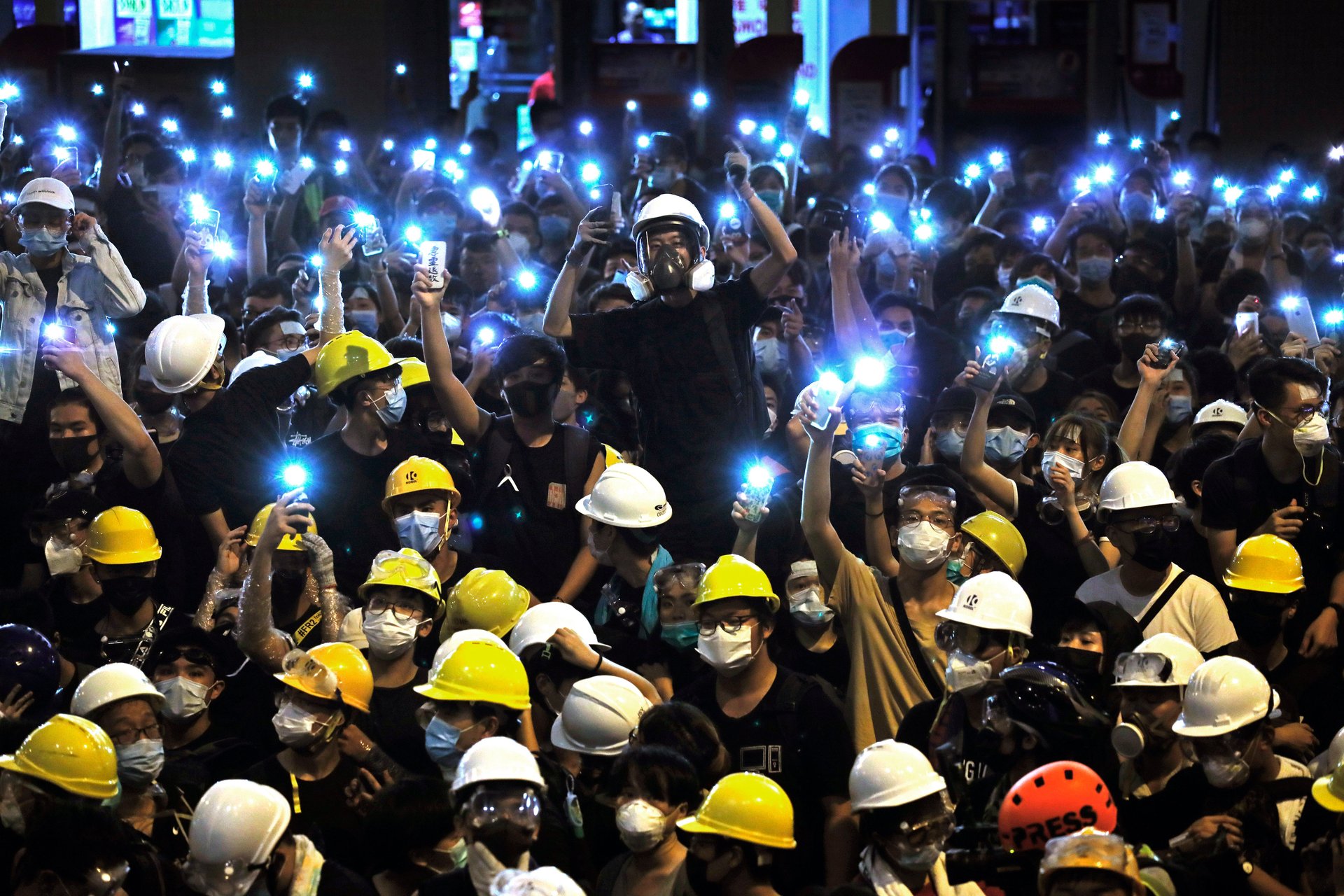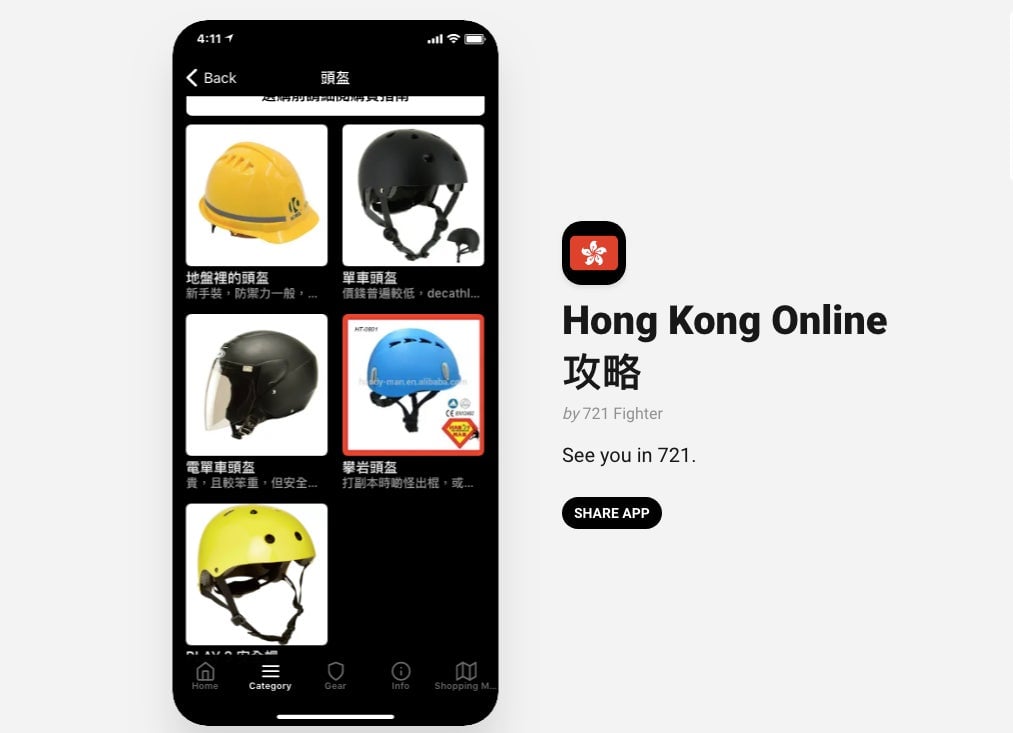Hardhats have replaced umbrellas as the symbol of Hong Kong’s protests
If the commonplace umbrella was the defining image of Hong Kong’s massive protest movement in 2014—hence the aptly named the Umbrella Movement—then the sturdy hardhat is fast becoming the symbol of the ongoing wave of protests.


If the commonplace umbrella was the defining image of Hong Kong’s massive protest movement in 2014—hence the aptly named the Umbrella Movement—then the sturdy hardhat is fast becoming the symbol of the ongoing wave of protests.
For the past seven weeks and counting, protesters have taken to the streets en masse in what began as opposition against a hated extradition bill that would have allowed the city to send suspects to China to face charges. Though the government has declared the bill “dead” after an unprecedented upsurge of popular anger, it has refused to completely withdraw it. Meanwhile, the popular movement has since grown to encompass broader calls for greater democracy and an investigation into police brutality, among other demands.
While helmets and hardhats were also used during the Umbrella Movement, they have taken on a much more central role this time around. Just like umbrellas, the hardhats serve both functional and symbolic purposes: they protect protesters’ heads in potentially violent situations, but also send a message of steely resolve as protesters buckle in for the long haul.
Across the city, people have even begun wearing hardhats to go about their everyday activities as a form of silent protest. Medical students have donned helmets to go to class, an H&M employee was seen wearing one while working at the cashier, and others have put them on for their commute to work. Some have affixed messages onto their hardhats, transforming them into personal mobile signboards. A hardhat was even put on the head of the Goddess of Democracy statue at the Chinese University of Hong Kong.
Hardhats have also featured front and center across a multitude of colourful protest posters in recent days, and especially so in the aftermath of a vicious attack by armed mobsters on civilians at the suburban train station of Yuen Long on Sunday (July 21). At local sporting goods stores, racks have been cleared of helmets and there have been reports of retailers being completely out of stock.
While many protesters have relied on neighborhood hardware stores to procure their hardhats and other protest supplies, other grassroots efforts have sprung up in an effort to meet the upsurge in demand and to provide higher-quality products. One such initiative is HKProtect, a site established by five volunteers who wanted to better protect demonstrators from police tear gas, rubber bullets, and batons. Another is an app designed to serve as a one-stop-shop of information for protesters, including what kind of gear to buy, and where from.

Earlier this month, local media reported (link in Chinese) that numerous freight forwarding companies had received orders from Chinese customs officials to cease sending goods including yellow hardhats, yellow umbrellas, and black T-shirts to Hong Kong. Over 20 sellers on Chinese e-commerce platform Taobao were also reportedly banned from sending (link in Chinese) “sensitive materials” including helmets to Hong Kong. In response, there are now efforts in Taiwan to collect donations of second-hand helmets (link in Chinese) for delivery to Hong Kong.
It also doesn’t look like the demand for hardhats will ebb anytime soon. After a march planned for tomorrow (July 27) in Yuen Long to protest against the violent mob attack and alleged police complicity was banned by the police over safety concerns, protesters have called for a day of running, shopping, cycling, and basketballing in “full gear”—hardhat included.
Just as protests have become woven into everyday life over the past two months, hardhats appear to be finding their way into everyday attire. Beyond their immediate protective and symbolic purposes, the push for “hardhats for the people” reflects a broader sentiment of the need for self-preservation. If the government and the police can’t be trusted to protect the people, they seem to be saying, then the people will simply have to look out for themselves—starting with putting on a hardhat.